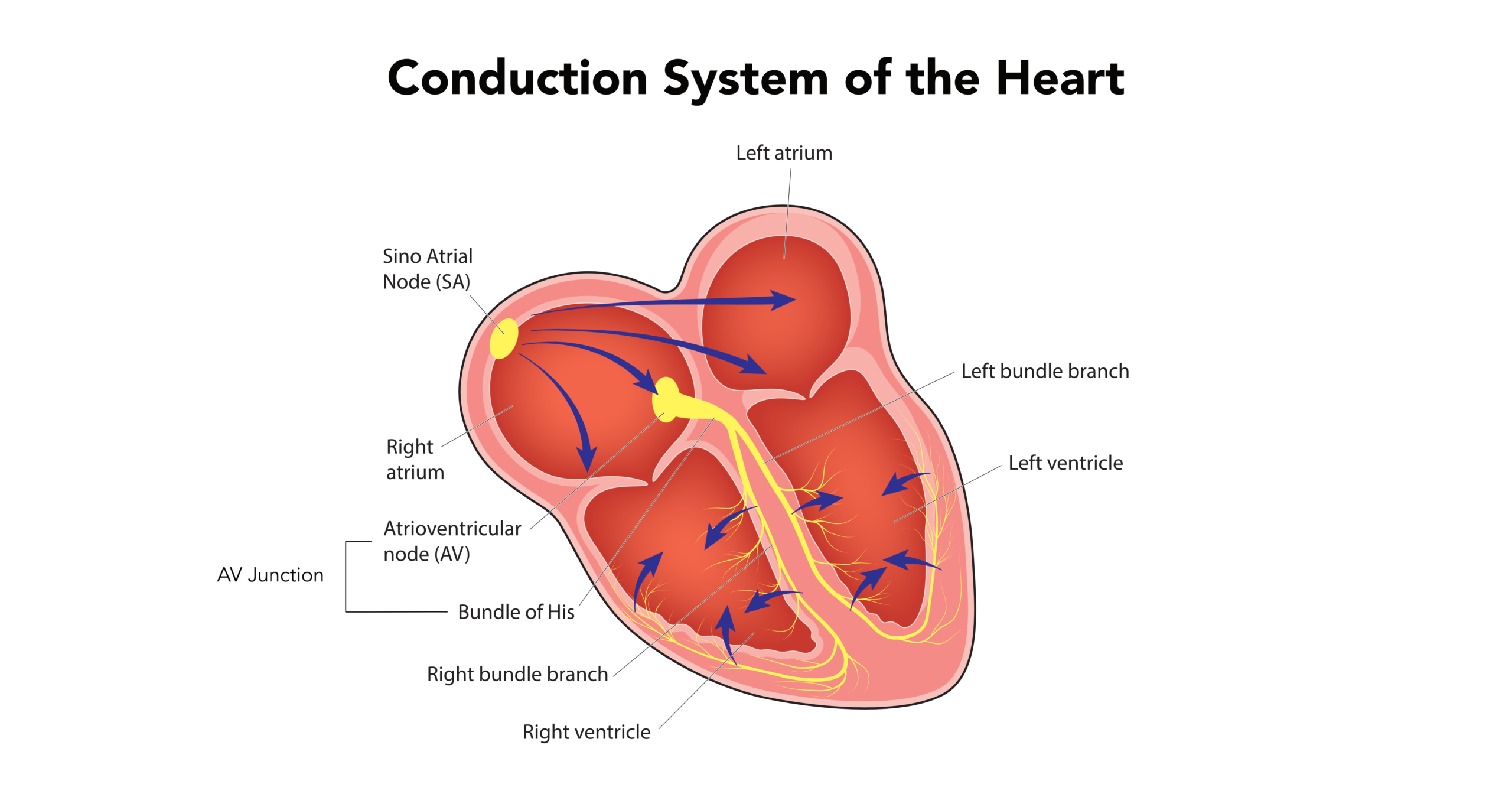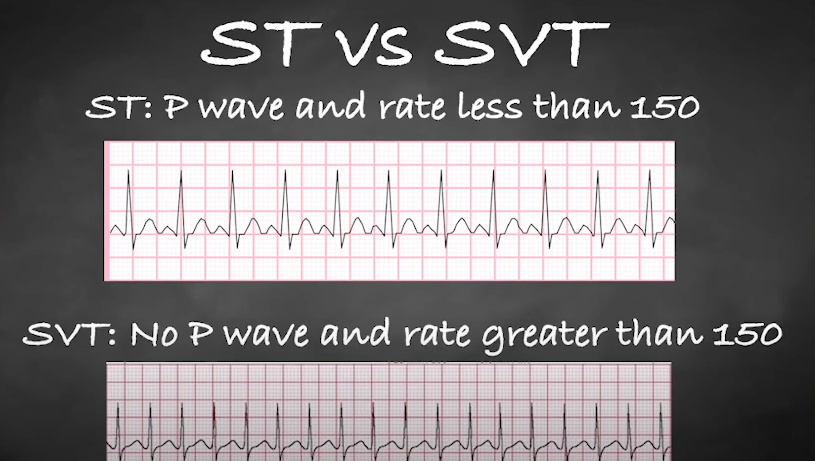Rhythms Originating from the Sinus Node
ACLS Certification Association videos have been peer-reviewed for medical accuracy by the ACA medical review board.
Article at a Glance
- Four rhythms originate from the sinus node.
- A normal sinus rhythm is the normal rhythm of a healthy heart.
- Clinicians should know normal sinus rhythm characteristics to identify abnormalities.
The following rhythms originate from the sinus node, the pacemaker of the heart: (1) normal sinus rhythm, (2) sinus bradycardia, (3) sinus tachycardia, and (4) sinus arrhythmia.
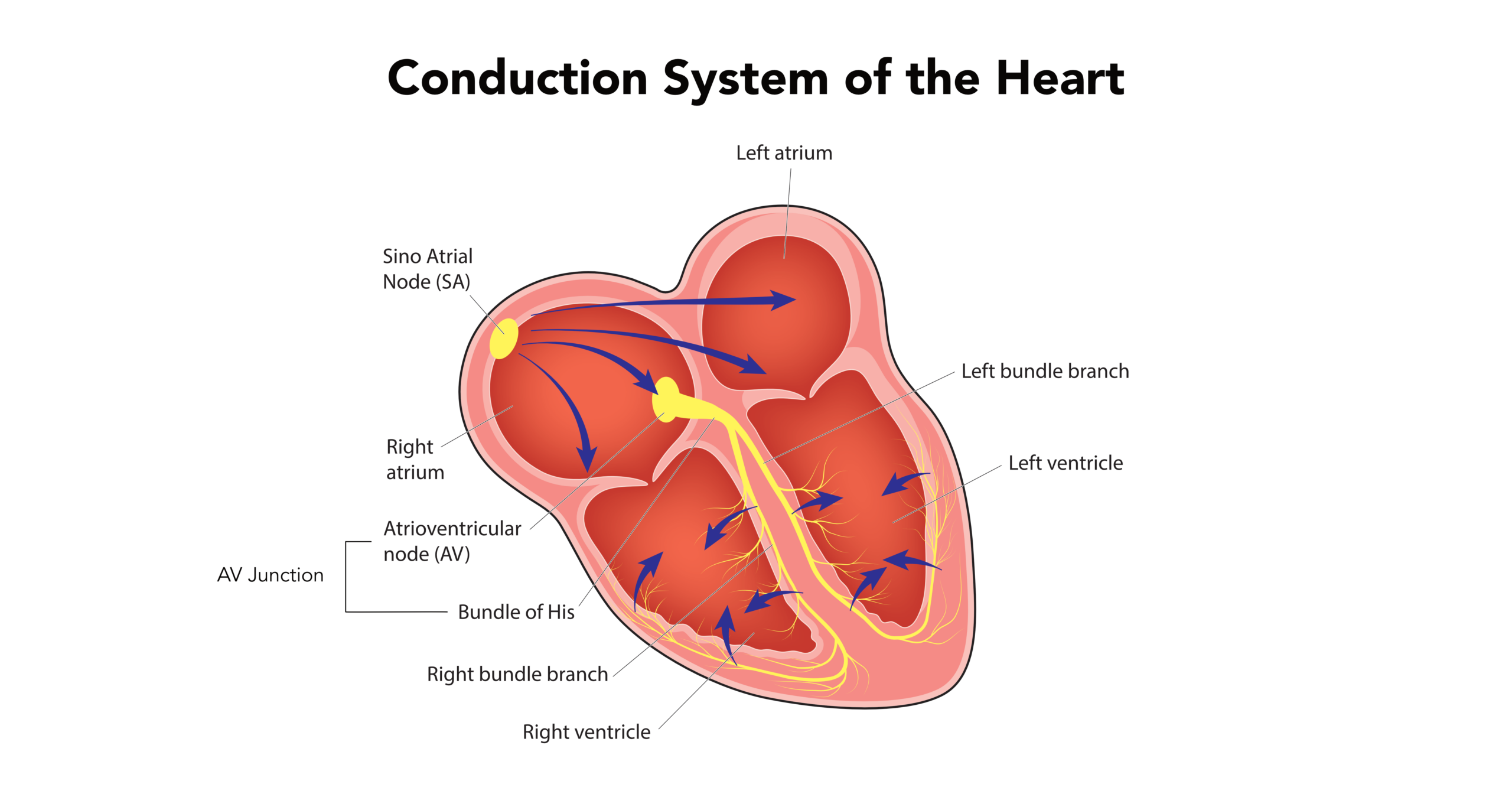
The right atrium’s sinus node is the heart’s pacemaker.
Normal sinus rhythm is the normal rhythmic pattern of a healthy heart.1 On a six-second strip of LEAD II, the following characteristics define normal sinus rhythm:Normal Sinus Rhythm
Related Video – ECG Rhythm Review – Normal Sinus Rhythm
Read: Rhythms Originating from the Atrium
Sinus bradycardia is a sinus rhythm with a rate less than 60 bpm.2Sinus Bradycardia
Related Video – ECG Rhythm Review – Sinus Bradycardia
Sinus tachycardia is a sinus rhythm with a rate more than 100 bpm.Sinus Tachycardia
Related Video – ECG Rhythm Review – Sinus Tachycardia
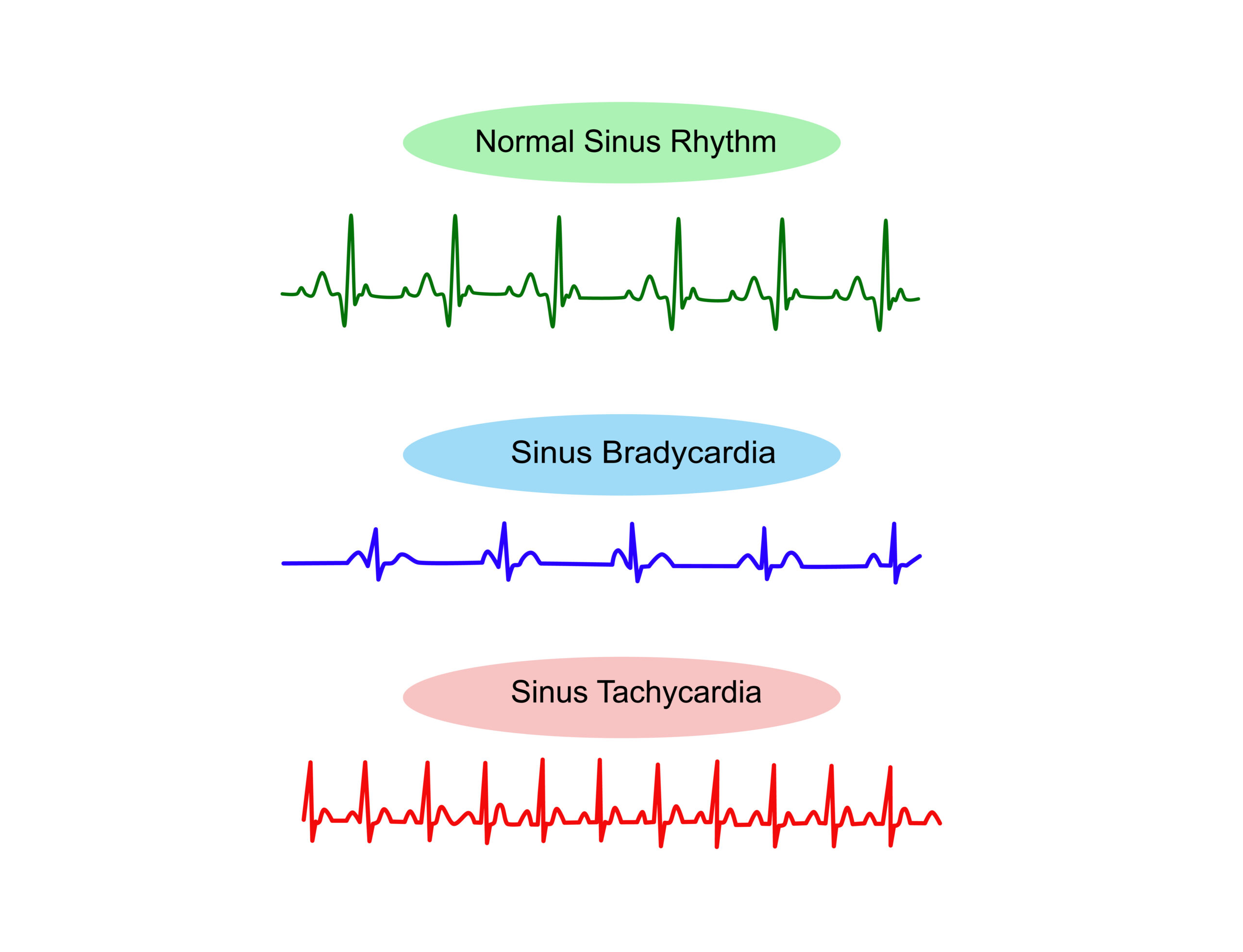
Sinus bradycardia is a sinus rhythm less than 60 bpm, while sinus tachycardia is a sinus rhythm greater than 100 bpm.
Sinus arrhythmia may occur with breathing, the heart rate increasing with inspiration and decreasing with expiration. It’s more evident in infants and children than adults.3 The same characteristics are present in sinus arrhythmia as normal sinus rhythm, but there is an R-R interval irregularity.Sinus Arrhythmias
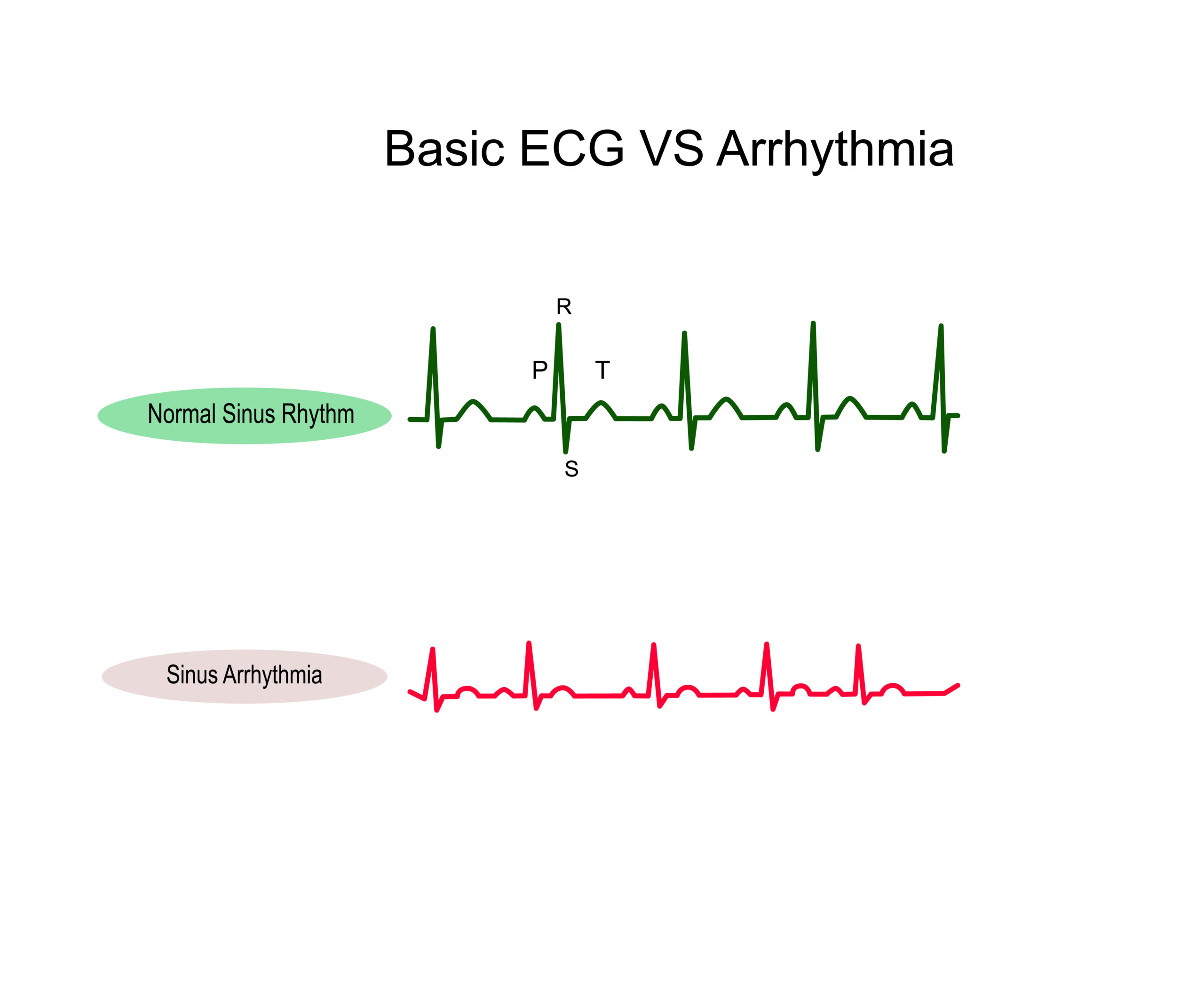
Compared to a normal rhythm, sinus arrhythmia presents with a variation in the R-R interval.
Related Video – One Quick Question: What are the Differences Between ST (sinus tachycardia) and SVT?
There are four rhythms originating from the sinus node, including normal sinus rhythm, sinus bradycardia, sinus tachycardia, and sinus arrhythmia. They all have different rates, rhythms, P wave ECG placement, PR intervals, and QRS complexes. Clinicians should know the different values to effectively diagnose and treat patients.Summary
More Free Resources to Keep You at Your Best
Editorial Sources
ACLS Certification Association (ACA) uses only high-quality medical resources and peer-reviewed studies to support the facts within our articles. Explore our editorial process to learn how our content reflects clinical accuracy and the latest best practices in medicine. As an ACA Authorized Training Center, all content is reviewed for medical accuracy by the ACA Medical Review Board.
1. Jill Seladi-Schulman, Ph.D. Understanding Sinus Rhythm. Healthline. 2021.
2. Cleveland Clinic. Sinus Bradycardia. 2022.
3. Michael P. Soos; David McComb. Sinus Arrhythmia. National Library of Medicine. 2021.
